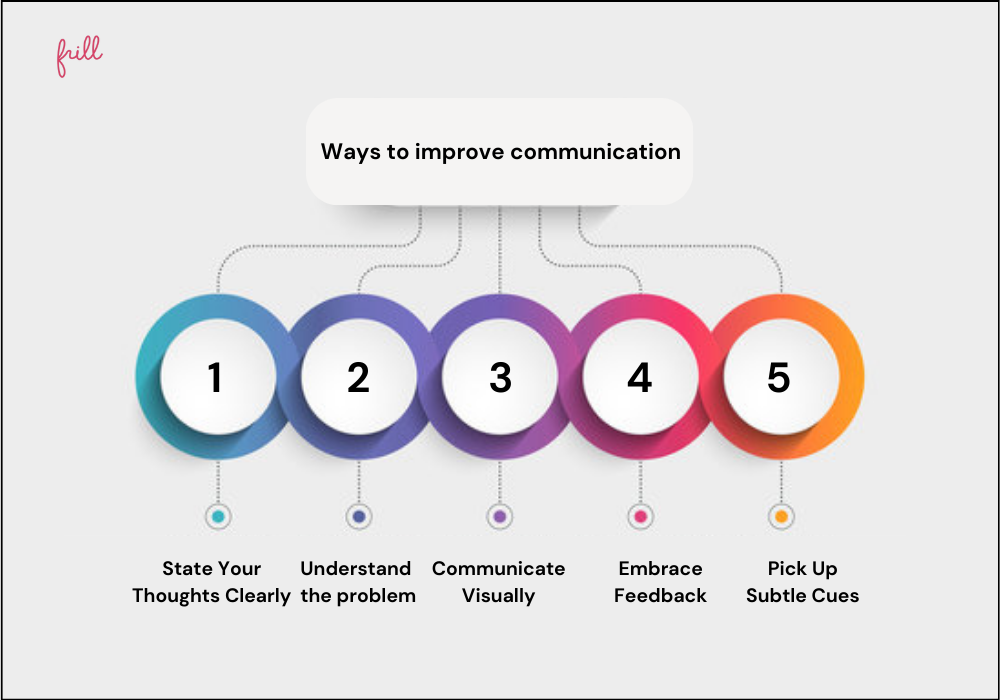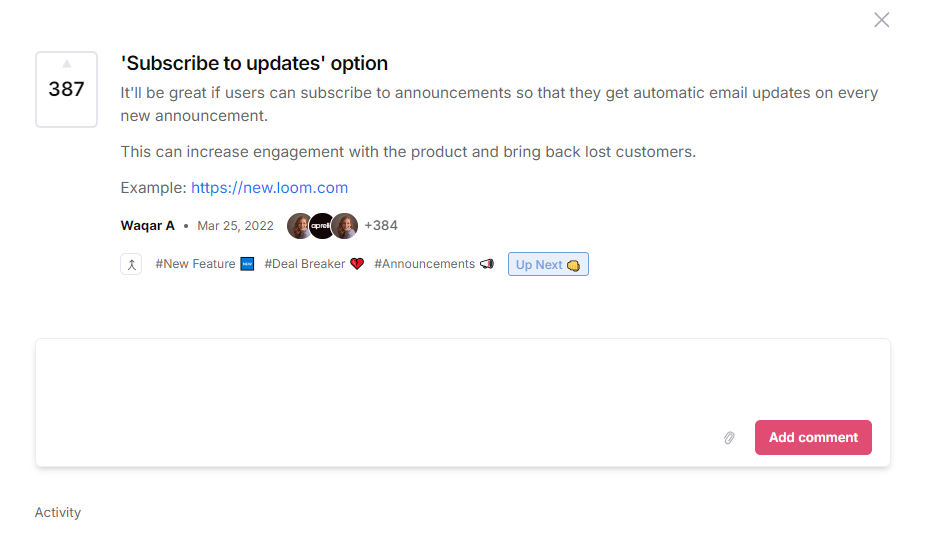5 Ways to Improve Dev Team Communication
Last updated on Mon Oct 07 2024
Every team thrives on effective communication, a crucial tool for achieving its goals. Development teams particularly require effective communication, as it can be challenging for techies to work together.
The tech world is complex yet needs team harmony if a project is to succeed. This creates a problem. The development team needs proper communication to succeed, yet communication is challenging.
This article provides a solution, offering 5 practical ways to improve communication for your development team. With these tips, your success rate will soar!
How to Improve Communication for Your Development Team

As the following steps will show, improving communication requires effort and a goal of mutual understanding. When your team members master ways to better communicate, teamwork becomes easier.
Here are ways to improve communication:
1. State Your Thoughts Clearly
Having a brilliant idea is one thing; communicating it is another. Have you ever tried explaining something to someone, only to get a confused stare in response? Conveying your thoughts into words can be an arduous task, especially in work-related groups.
However, if your ideas are to be implemented, they must first be understood, going from thoughts to words and then to action.
Start by ensuring you have a good grasp of your idea, making sure it is clear to you. Then, work on precision. What are you asking for? What do you intend to achieve? What do others gain from your idea? Remember, developers tackle technical issues, which makes precision even more necessary. Avoid assumptions and ambiguity.
Stay away from jargon and overly confusing words, even if your audience is only developers. If you must use technical terms, explain them to ensure everyone is on the same page. Remember, people hear and process words differently. Do not assume everyone understands a word the way you do.
Road mapping is a good tool for structuring your thoughts, which you can learn more about in our article, What is Roadmapping?. With this tool, complex tasks and goals can be broken down into simpler action steps.
2. Spend Time Understanding the Problem
It might be tempting to move directly into seeking solutions, but a far more effective approach begins with understanding the problem deeply. In fact, the development team has a better chance of formulating clear solutions when they understand the problem. Better knowledge of the problem equals deeper solutions.
Start by breaking the problem down into smaller issues. Like doing chores, a problem that seems huge becomes simpler when broken down. Once the problem is broken down this way, the team can easily find the root of the issue. The team must then discuss the problem, seeking ways to better understand it. Questions like “Why did this happen?” and “What are the symptoms of the issue?” are good conversation starters.
This approach is particularly helpful when the problem is related to a customer’s needs. Customers may not always communicate their needs clearly, so the problem must be further analyzed to find a clear route. With customer research surveys, your team can work better at dissecting the problem.
3. Communicate Visually
Visuals complement written or spoken messages and sometimes even surpass them in helping others understand. While we should not underrate the importance of written and spoken communication, visuals speed up the understanding process. By visuals, we mean videos, images, charts, etc.
For example, a written message describing a new feature may become bulky and complex, but a simple chart can clarify the information. That is the power of visuals. We often process visuals faster, right from childhood, hence the use of visual tools to teach infants.
Visuals come in handy in different functions, from discussions to sharing progress reports, using platforms like Trello. They can also help when releasing updates or communicating new features. To distribute updates effectively, consider these release note templates.
4. Embrace Feedback

Communication involves both speaking and listening, making feedback an important part of effective communication. This is true in all our relationships, including professional ones. Development team members need to ensure that feedback flows smoothly.
Proper listening, a friendly atmosphere, and encouragement for feedback are all necessary to get your team talking. They should understand that their constructive feedback matters, even if it does not align with your ideas.
While respect is essential, no one should feel nervous about speaking in any discussion. Be willing to listen and slower to interrupt when someone is offering feedback. Ask clarifying questions to ensure everyone is on the same page. Offer different methods for providing feedback if someone is uncomfortable stating it publicly.
Of course, feedback goes beyond critiquing. It can also be affirming, and sometimes you are the one giving feedback to others. Use a lot of positive feedback to motivate your team, and let your criticism be directed towards the problem, not the person.
Foster a habit of positive communication in the team, and you will have more people willing to collaborate and engage in making decisions. Also, when the atmosphere is positive, it is easier to tackle disagreements and misunderstandings.
For more on managing feedback, visit our Guide to Customer Feedback Management.
5. Pick Up Subtle Cues
Here is basic communication knowledge: There are two forms of communication, verbal and non-verbal. Many times, people say one thing yet mean something else. Be observant enough to detect what is not being said. These subtle cues are as important as what is being said.
Is there hesitation? A lack of enthusiasm? That rapid eye glance between teammates? They all matter. These non-verbal statements are difficult to hide. Hence, they give insight into how people feel. If, for example, a team member remains silent during meetings, you may need to figure out why.
Some people have concerns or confusion but may not be confrontational. For this group, you need to encourage them to speak up.
Communication requires a high degree of emotional intelligence, particularly in discerning hidden thoughts. It is often difficult in remote settings with virtual meetings, but even in this situation, you can detect changes in expressions.
Also, understand your team members and their comfort levels. If some prefer personal meetings, make allowances for that. Use open-ended questions to draw them out, and constantly encourage open communication.
For further reading on feedback methods, explore SaaS Feedback.
Wrap Up
Improving your team’s communication can be challenging but possible. It is also necessary for proper understanding and the completion of projects. Be proactive in creating a safe atmosphere, work on precision, and foster a feedback culture among team members. Before any misunderstanding arises, have conflict management tactics in place to handle these situations.
For additional resources on fostering team efficiency, refer to our Product Management Process.